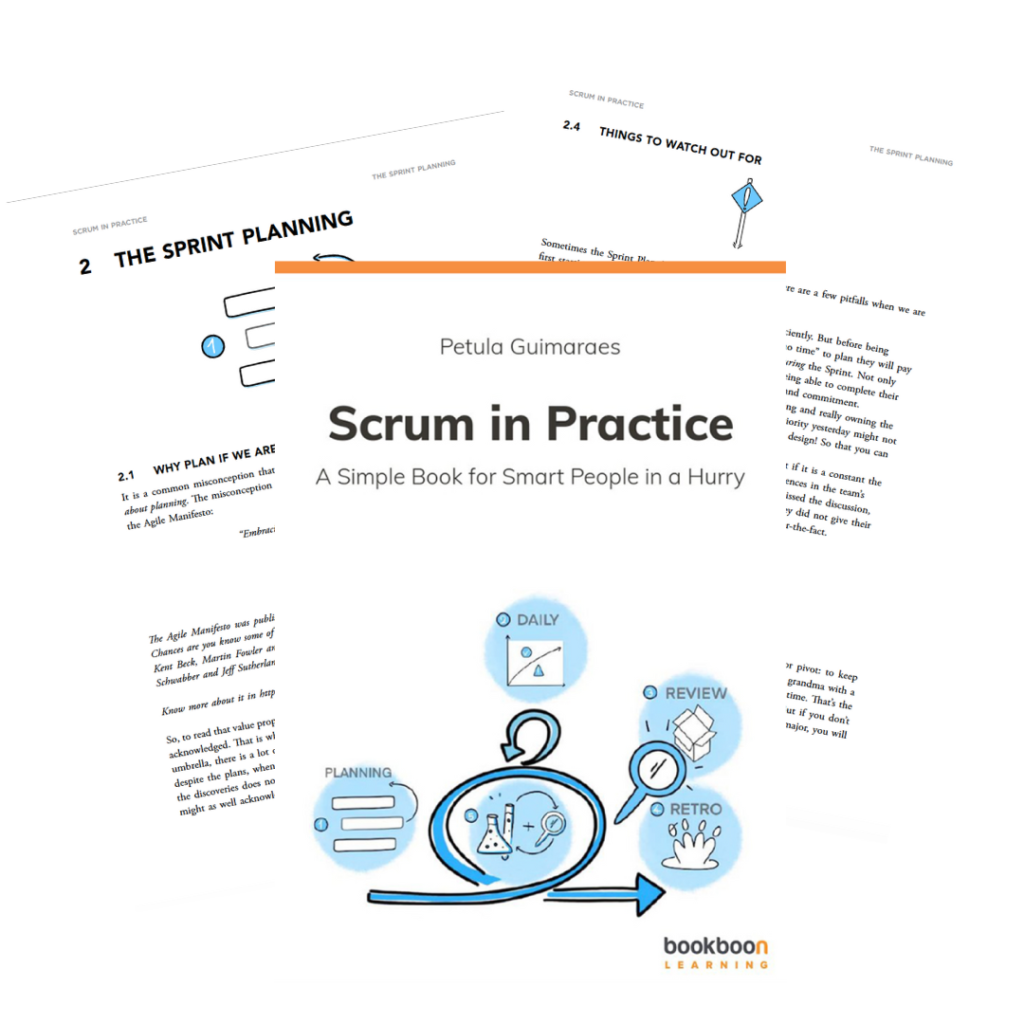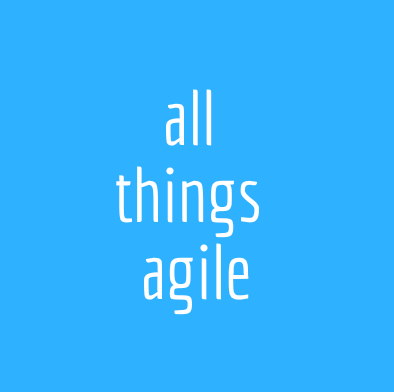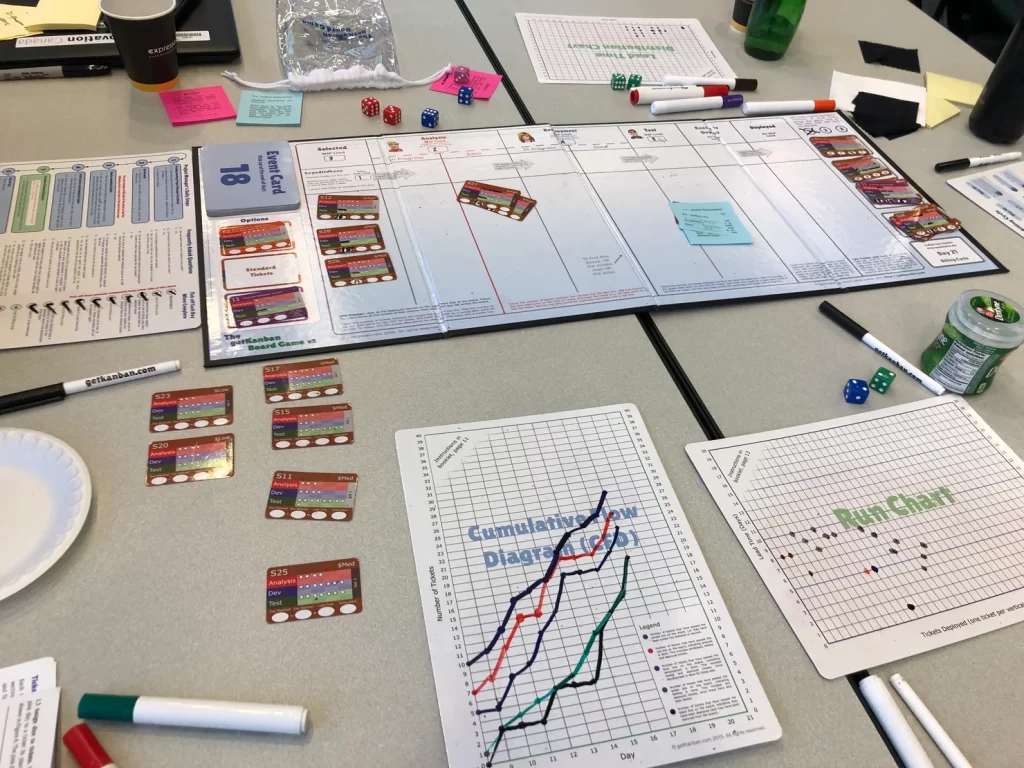In the Agile Tour Montreal 2020 I had the pleasure of introducing the model I have been using to up-skill Scrum Masters with 100% of success. It is a model based on mentoring and discovery, creating awareness about the many facets of the Scrum Master role. I was pleased once the new Scrum Guide came out in 2020 just two days before my workshop. In my personal reading, the accountabilities set for the Scrum Master are even more aligned with this work.
This is going to be a rather long post, so grab some coffee to join the ride!
Intention
A mentoring program to elevate the role of Scrum Master to its real purpose and accountability.
It is not uncommon to see companies asking for a Scrum Master but in reality, expecting the professionals in that role to basically become a delivery lead: someone that organizes and guarantees that software output is happening as often as possible. While this is a valid piece of intention, this is NOT what the role of Scrum Master is about. This role is a very clear accountability described in the Scrum guide: A Scrum Master is responsible for the effectiveness of a team. Therefore, for us to have a Scrum Master:
- We have to have a team. Not a project or “resources” bundled together, but a team;
- We have to be running Scrum or any Scrum-based framework. Asking for detailed requirements followed by development and then test cycles, meeting up for status review at the end of every two weeks is NOT doing Scrum;
- The Scrum Master is not a commander, telling the team what to do, but is a key influential figure within the team.
A Scrum Master is a team enabler first and foremost, someone who helps a group of people to self-organize around a common mission for quality and value delivery. It is also an agility enabler for the organization, helping to remove bureaucracy and heaviness on processes beyond the team. In companies that either hire or consult with Agile coaches it is imperative that the Scrum Masters become the first line of partnership with coaches. As an Agile Coach I am rather limited to my scope within an organization, unless the Scrum Masters, whose accountability lies within teams and processes, comes into play as well.
The intention was then, for individuals and for companies, to
- Create awareness of what the role really is, once and for all. Elevate the Scrum Masters from the front line of delivery to the center of work effectiveness.
- Generate an agreement of this role elevation between Scrum Masters and their leads.
- Give the Scrum Master a space to learn and discover; sometimes discover what they already know!, and most importantly, to share among their group, not only their thoughts, but some of the practices they put into place.
After running a few individual pilots, I then came up with a format for groups of Scrum Masters, trying to replicate the success I was having with one-on-one coaching.
Format
Small groups, running together for a given period of time. This was designed for creating a sense of confidentiality and intimacy, to give space for the growth of a community among the members of the program. In a smaller group there is more space for lengthy sharing and for silence. Meeting regularly as opposed to a big-bang two or three days is a lot easier on the brain and for letting people try things in between meetups. Also, those “two full days meetups” are usually too intense and become more training than actual mentoring. They create a lot of excitement, but a lot of the discovery fades away quickly.
In a nutshell, the format was:
- Meeting for a kickoff;
- Meeting for 8 sessions of 3 hours each (why 8 sessions? Resources will explain it below);
- Groups of no less than four and no more than six scrum masters;
- Two or three facilitators.
Resources
The agile community is constantly creating fantastic knowledge and we all build on top of each other’s work. That is how we can all advance through experimentation and adapting, instead of reinventing a lot of things.
Four resources I had used a lot for the past four years just came together to create the mentoring program I put in place. They are the following: for context, the SM Clinics; for content, the 8 stances of the Scrum Master; for structure Training from the back of the room and Liberating Structures.
The 8 stances of the SM
The heart of the concept, I came across this material at some point in 2017 and had used it in my own coaching practice and I was really impressed on how simple the proposition by Barry Overeem is.
Despite the fact that he has his own definition for the 8 stances and that your very own view might differ a little bit, I think his work is just fantastic as a Scrum Master workbook. The stances are:
- Teacher
- Mentor
- Coach
- Manager
- Impediment Remover
- Servant Leader
- Change Agent
- Facilitator
In the mentoring program, each stance became a session. We had 3 hours to invest in discovering the why’s and the how’s of each.
My contribution
Once I was familiar with coaching with the 8 stances as a base framework I eventually proposed an organized navigation through the stances. What became clear from my practice was the natural fit of the Shu-Ha-Ri in the 8 stances and in the overall Scrum Master practice.

Here is how I approached them:
SHU: Teacher and Facilitator
Fundamental, but not basic, a scrum master should master, if anything these two aspects of the role. Teaching Scrum specifically, but Agile in general. And facilitation as the art of amplifying voices, structuring interactions, help people navigate conflict and making sure objectives are met. There is a lot of room for personal expression in the practice of teaching and facilitating, but also a lot of “by-the-book”: we will not coin yet another 12 principles of Agile or imagine different Scrum values. A lot of the basic has to stay “as is” and this is not limiting, but rather structural, to ground the practice.
HA: Mentor, Manager and Impediment Remover
For the layer in which we start to expand from the rules, borrow from Lean, Management 3.0 and many other disciplines, I felt that these 3 belonged in here. As a mentor, the relationship of once a teacher evolves into sharing experience and giving perspective. A manager, managing systems, not people also felt at home together with the removal of impediments: we learn to see beyond the obvious and treat everything as experiments, with a why and a how and we measure progress. I would say that even seasoned Scrum Masters still spend a lot of their time perfecting this part of their practice because theses stances can get as different as there are teams and the techniques that we put in place need constant fine tuning.
Ri: Change Agent, Coach and Servant Leader
In the words of Alistair Cockburn: “I cannot tell you that”. This for me is the category that describe the Ri: the unknown the true discovery, what I cannot tell you. We cannot teach someone how to be a servant leader or a change agent. We can definitely discuss what makes great examples of those, what are conditions for that sort of awakening and create a lot of room for self-discovery. But there is no step-by step or recipe that guarantees your path to transformation. Here, I find, not a single Scrum Master will perform similar to another and they will all have an individual read and presentation of their own servant leadership. They will become the coaches their own selves ask them to be! And becoming a change agent goes beyond using Lean Change framework.
While I would never say that is the only way to go about the work of Barry Overreem, that is certainly the way I found success when mentoring with it.
Training from the back of the room
How to get out of the way and let people learn? That is the proposition behind all the work of Sharon Bowman. Not only her approach to creating engaging, creative sessions so that people can learn at their own pace and on their own level and interest, but also her famous Learning Canvas, or the 4C’s template.
In a learning canvas, the learning objective is the first thing we should think about, considering our audience and the total time in our hands (our timebox). With that, she invites us to design the learning session in a journey from Connections to Conclusions. Here are the 4C’s:
- C1 – Connections: how will we introduce the theme or subject considering what our audience already know, think they know or want to know? Basically here every person starts connecting with their inner understanding and desire to learn and share on the topic. It is not an ice-breaker not a check-in. It is also a chance to start honoring pre-existing knowledge in the room.
- C2 – Concepts: any theme can be subdivided in smaller topics, to make knowledge more digestible. It is also a great reminder that we cannot talk about everything possible in a theme, say the stance of the Impediment Remover. We have to select what is a must and go from there. The concept part is thought out considering the context of the Scrum Masters. Beginner Scrum Masters that used to be software developers would definitely need to discuss different things than experienced Scrum Masters who’d been in this role for 5 or more years.
- C3 – Concrete practice: is where it all makes sense and the interaction of the day shines. Activities are designed to make people discover in ten minutes what you could not possible tell them in an hour. For those used to serious plays, liberating structures and other similar ways of interacting, we cannot skip this process. In the back of the room, never will the facilitators be more important and yet less participative than in this moment. Here the mentees interact and share with the activity to foster their personal discoveries. It is the highlight of the whole session. And where more time is spent.
- C4 – Conclusions: It is also important to give the mentees a clear moment to wind down and especially if the C3 was too much fun, to get out of the ludic spirits and bring the knowledge to the forefront of their minds. It could be a question or a silent activity in which the mentees can close the chapter of the learning for now and even give themselves pointers from where continue their own personal journey of learning more or applying things to their daily practice.
Here is an example on how I designed the Impediment Remover stance in a learning canvas. For each and every concept at least one activity is in place. Most of the times the activity can cover several concepts if so desired. It takes just a mix of creativity and facilitation skills to bring that to fruition.

Liberating Structures
Liberating Structures (or LS) are micro-structures that let us tap into collective intelligence, let us hear all the voices in the room and get out of the usual way of thinking interactions (brainstorming, meeting, etc.). I have always loved and used LS in my practice and basically how to design each of the 4C’s allow for a few structures such as 1-2-4-all throughout, or even TRIZ and Appreciative Inquiry when trying to make connections or 15% solutions when closing. But you can go even beyond by designing new LSs based on the interactions that you wish to see happening!
Explore the Liberating Structures catalogue.
Building up so far, if you consider the stances introduced, the 4’Cs and now the use of liberating structures, here I show a piece of the actual sequence of interactions depicted in the 4C’s for impediment remover looked like for the program.

Scrum Master Clinics
Tobias Mayer had this simple article once on LinkedIn that captured my attention and made me want to step into this idea of mentoring. I love how he describe the simple steps for what he calls a model for Scrum Master clinics. In his website he has a much more detailed approach, a word document that helps you understand scope and structure in much more depth. The key aspects I took from his work are:
- Anyone can mentor, as long as they have experience. Which is perfect so that everybody can at a certain degree mentor each other;
- More than one facilitator should be around to avoid the “cult of personality”;
- Sharing at the center of everything. Less teaching, more discovery;
- Voluntary participation, both for facilitators and for participants. You cannot be forced into mentoring. It requires generous sharing of knowledge and time.
Final thoughts
If you never heard of any of these resources before, this mentoring framework probably became a universe to discover. I am happy for you as I believe strongly in all this work. If some of those were already of your knowledge, how does it all put together feels like for you? I would love if you engage in here with comments or if you join me via social media.
But this is more than just talking about these resources. This is an attempt to describe what a mentoring program put in place looks like. A lot is yet to be said about finding leadership buy-in and understanding the context of the company (or client) to design the perfect content to help Scrum Masters. But it all starts with intention, context, structure and content. How you will cook them all is what will create your very unique program!
The Agile Tour 2020 workshop
I was fortunate enough to share the program our learning and to invite the audience to taste a bit of what it takes to build such a program in the Agile Tour Montreal 2020. I had created a bilingual virtual space so that people could easily navigate and consume the information during the workshop and also later. This space can still be found in read-only format here: https://miro.com/app/board/o9J_kiYH8Sw=/ .
This is what the little universe in Miro looks like. Follow the numbered arrows and enjoy!

Get Practical and simple Scrum knowledge
I wrote a book making Scrum as simple as possible. If what you are looking for is more Scrum knowledge, are interested, check out my e-book. Scrum is very simple, and you can learn how to use it in a day. If you never worked with agile before it most certainly introduces you to agility in a very practical way.

Become a better agile team facilitator
No matter your choice of framework (and Scrum is but one of them), there is actually a rather simple way to approach how teams work in agile. They plan, execute, and the adjust work they do and how they do it in a rather unique way. And that, my friend is consistent independent of any framework used. Isn’t that cool?
If you’d like to learn how it all works and even more so, how a facilitator for agile teams (that would be YOU) positions themselves, you’ll probably like to join the upcoming cohort of the Agile Team Accelerator. Since 2015 I’ve been mastering how to coach individuals and teams on how to get more performance with agile .
That’s the place for you not only strip agile bare to your team, but also position yourself as a great agile team facilitator and get one step ahead in your personal leadership skills.
#ATMTL20 #agileTourMTL #the8stancesofthescrummaster #mentoring #scrummaster #scrummasterclinics



